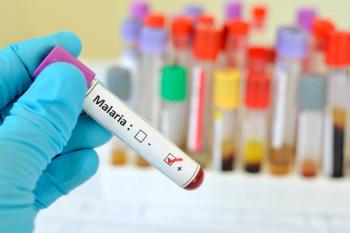
Type 2 Diabetes More Prevalent in Women with PTSD
Civilian women with posttraumatic stress disorder have a considerably increased risk of developing type 2 diabetes compared with counterparts unexposed to trauma.
Civilian women with posttraumatic stress disorder (PTSD) have a considerably increased risk of developing type 2 diabetes (T2D) compared with counterparts unexposed to trauma, according to the results of a 22-year longitudinal study published January 7, 2015, in JAMA Psychiatry.
For their study, Andrea L. Roberts, PhD, a research associate at the Harvard School of Public Health, and colleagues examined questionnaire responses on lifetime trauma exposure and PTSD symptoms returned from 54,282 US female nurses who had participated in the Nurses’ Health Study II in 1989 and were subsequently followed biennially. In each biennial questionnaire, the women were asked about recent T2D diagnoses and height and weight measurements, while other periodic surveys assessed depressive symptoms, antidepressant use, and health behaviors comprised of cigarette smoking, diet quality, physical activity, and alcohol intake.
After reviewing those survey responses, the researchers determined that women with PTSD symptoms had a higher incidence of T2D than those who had not experienced a traumatic event. This association presented in a dose-response fashion, as the authors calculated 4.6 T2D cases per 1000 person-years among women with 6 or 7 PTSD symptoms, 3.7 cases per 1000 person-years for those with 1 to 3 symptoms, 2.8 cases per 1000 person-years for trauma-exposed women with no PTSD symptoms, and 2.1 cases per 1000 person-years in the control group of women unexposed to trauma.
“Women with the highest number of PTSD symptoms had a nearly 2-fold increased risk of T2D compared with women without exposure to trauma,” the study authors concluded. “Our results provide the strongest evidence to date that there may be a causal relationship between PTSD symptoms and T2D incidence.”
Of note, antidepressant use and a higher body mass index accounted for almost half of the increased T2D risk among women with PTSD, but none of the measured health behaviors were mediators.
“Since we now know that women with PTSD are at greater risk of getting diabetes, (pharmacists) can advise their non-diabetic patients who are being treated for PTSD or depression to make sure to get their regular plasma glucose tests and be aware that PTSD may increase their risk of gaining weight,” Dr. Roberts told Pharmacy Times. “In general, perhaps remind patients that treating mental health issues may protect them against future serious physical health problems like diabetes.”
Although Dr. Roberts said it is too soon for pharmacists to be concerned about a potential association between antidepressants and T2D, she noted that it is an “excellent topic for future research in pharmaceutical sciences, since our study suggests there might be a link.”
Newsletter
Stay informed on drug updates, treatment guidelines, and pharmacy practice trends—subscribe to Pharmacy Times for weekly clinical insights.




